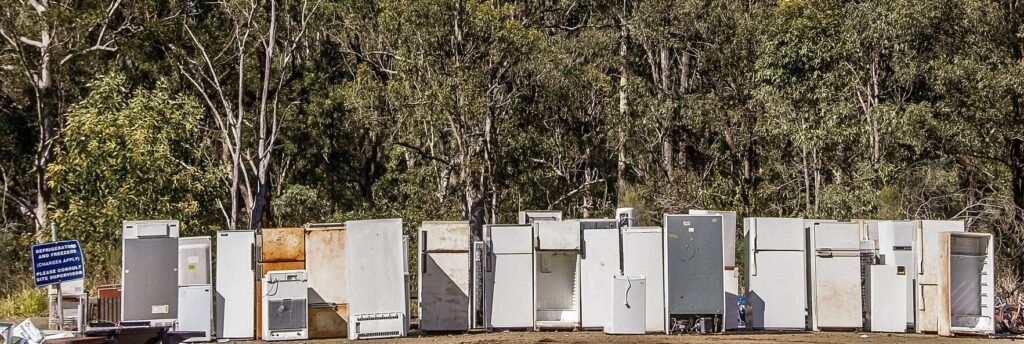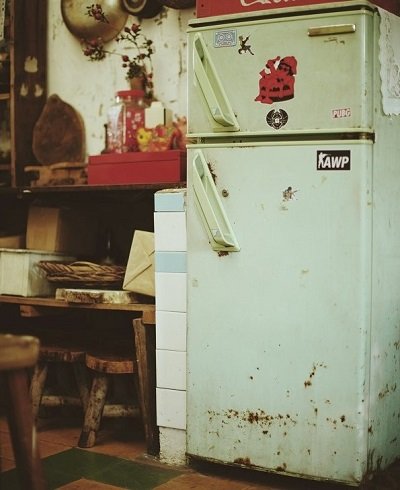Introduction
A refrigerator is a common household appliance that helps to keep food fresh.
However, when a refrigerator reaches the end of its lifespan, it can become an environmental hazard if it is not properly disposed of. Refrigerators contain Freon, a harmful substance that can damage the ozone layer if released into the atmosphere.
One of the best ways to combat climate catastrophe, according to scientists, is to manage refrigerants and properly recycle refrigerators.
So, recycling your old refrigerator is the best way to ensure that it is properly disposed of and does not cause harm to the environment.
Why is it important to recycle your old refrigerator?
There are several reasons why recycling your old refrigerator is important.
First, as mentioned above, refrigerators contain Freon, which can be harmful to the environment if released into the atmosphere.
Some older versions contain even more hazardous gases like CFC and HCFC, which are known to be silent climate killers. These substances have the potential to warm the Earth thousands of times more than carbon dioxide.
Second, old refrigerators often contain hazardous materials such as mercury and lead. When these materials are released into the environment, they can pose a risk to human health and wildlife.
Finally, in addition to being good for the environment, recycling your old refrigerator can also save you money. Many companies offer rebates or other incentives for recycling refrigerators, which can offset the cost of buying a new one.

What is the process of properly recycling your old refrigerator?
First, you check whether a fridge still contains gases. It must be separated and collected in a leak-free manner. We’ll go over these gases in more detail later.
After gas separation, you can fold up the metal sheets of the outer frame, and a machine crushes them into blocks.
The rigid foam inside the body is particularly hard to recycle because it can’t be melted and reshaped like other materials. However, there are companies that recycle this type of foam by shredding it and using it to insulate roofs or make coolers.
Some companies just smash the refrigerator and shred it into metal chunks, which is frowned upon by many experts because it increases the risk of a gas leak while saving time and manpower.
Finally, you strip the wires to sell the metals inside. The recycling process is a bit more complicated than just throwing your old fridge into the recycle bin, but it’s worth it because you can make some money from recycling materials. Plus, you’re doing your part to reduce pollution and help the environment.

How to deal with harmful gases or refrigerants in a refrigerator?
The Refrigerator contains gases that are often known as refrigerants. The gas leaked out of about a third of the fridges during use. Each fridge contains about half a pound of gas, not much amount but still too hazardous for the environment and these are dangerous gases rather than CO2. Making money from collecting gases may not be possible most of the time, but as a conscious person, you should never ever release those gases into the atmosphere when recycling or by any means.
There are three types of refrigerants, hydrofluorocarbons (HFCs), chlorofluorocarbons (CFCs), and hydrocarbons. HFCs are the most common type of refrigerant used in fridges today. They don’t damage the ozone layer, but they’re still greenhouse gases and contribute to climate change. CFCs are the older type of refrigerant and are very harmful to the ozone layer. Hydrocarbons are also greenhouse gases but aren’t harmful to the ozone layer.
The United Nations Environment Programme (UNEP) announced the Montreal Protocol on substances that deplete the Ozone Layer in 1987 to address the issue of CFCs and other ozone-depleting substances (ODS).
The production and consumption of CFCs and other ODS were phased down under the terms of the Protocol. The Amendment to the Montreal Protocol, which was agreed upon in 1997 in Kyoto, Japan, requires Parties to phase out the production and consumption of HCFCs – hydrochlorofluorocarbons – by 2030.
Under the Protocol, countries have reduced their combined production and consumption of CFCs by more than 98 percent. Though older fridges still contain CFC gases so in process of recycling this must be taken care of.
CFCs are continuously leaking out of outdated equipment around the world, even though most manufacturers stopped using them by 2009. If the leaks aren’t stopped, equivalent to 10 billion metric tons of carbon dioxide will be released into the atmosphere.
There are some special companies, which find and destroy fridge gases mostly called refrigerants around the world. A special type of waste facility that heats the gas until the molecules come apart. The machine cools back down, and eventually, more than 99% of the gas becomes water or steam. The toxic gas is gone forever.
Tradewater is an example of this type of company. This company not only helps to clean the environment but also provides a service to many countries that struggle with the proper disposal of refrigerant problems. They can help to cross borders and navigate the web of legal restrictions to get these gases to the destruction facilities. This is a difficult and time-consuming process, but it is worth in order to keep our planet clean. Tradewater helps fight greenhouse gases by selling carbon offset credits. These credits can be bought by anyone who wants to reduce their carbon footprint. By buying an offset credit from Tradewater, companies can save money and help the environment at the same time. You can learn more in the following youtube video about the refrigerants effecting the global climate change.
Some Tips for buying an eco-friendly refrigerator
When looking for a new fridge, consider an eco-friendly one. These fridges use less energy and often have features that prevent gas leaks. Some eco-friendly fridges are also made from recycled materials. Not only will you be doing your part to help the environment, but you’ll also be saving money on your energy bill.
Here are a few things to look for when shopping for an eco-friendly refrigerator:
- Look for a fridge with an Energy Star label. This means that the fridge has been certified by the EPA to meet certain energy efficiency standards.
- Check the Fridge Finder on Energy Star’s website to see how different models compare in terms of energy efficiency.
- Choose a fridge with automatic defrosting to save energy.
- Make sure the seals on the doors are tight so that cold air doesn’t escape, and warm air doesn’t enter.
- Look for a fridge with a no-leak guarantee to prevent gas leaks.
- Try to choose a model that is made from recycled materials.
- Consider a smaller size: A smaller refrigerator uses less energy than a larger one, so it’s an eco-friendlier option.
- Choose a model with an efficient compressor: The compressor is responsible for most of the fridge’s energy use, so it’s important to choose a model with an efficient compressor. Models with variable speed compressors are typically the most energy-efficient.
By following these tips, you can find an eco-friendly refrigerator that meets your needs and helps to protect the environment.

Conclusion
In conclusion, it is important to recycle your refrigerator properly to avoid releasing harmful gases into the environment. By taking the time to recycle your fridge, you can help reduce your carbon footprint and do your part to protect the environment. The eco-friendly fridge is the better choice when it comes to buying a new refrigerator. Not only are they more energy-efficient, but they also help to prevent harmful gases from leaking into the atmosphere. Be sure to follow the tips above when shopping for an eco-friendly fridge so that you can find the best model for your needs.



